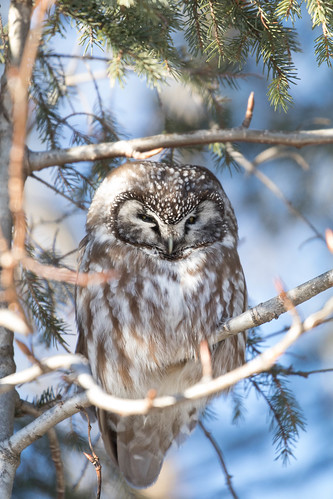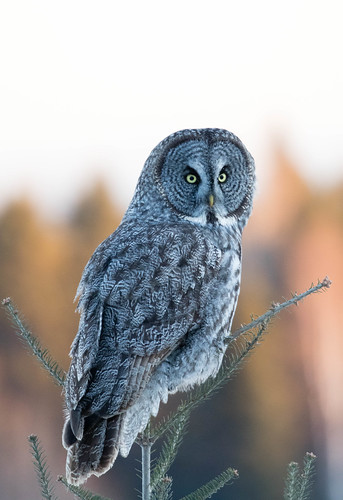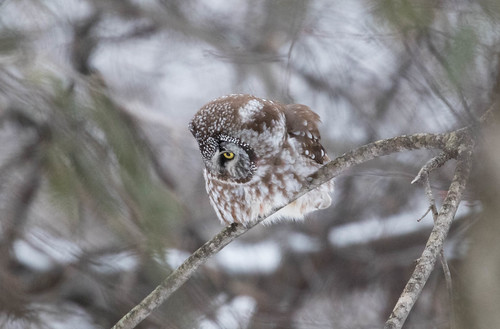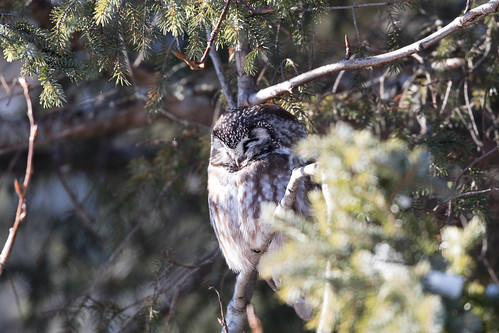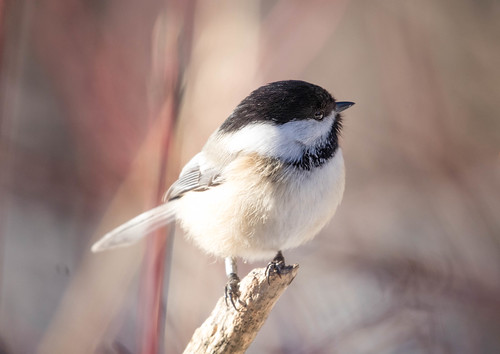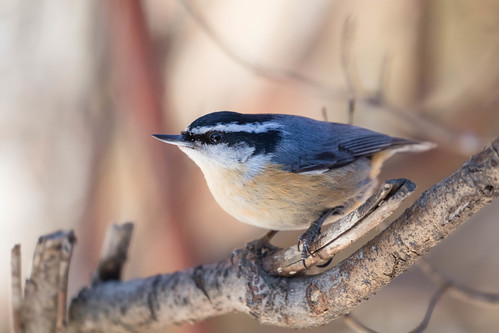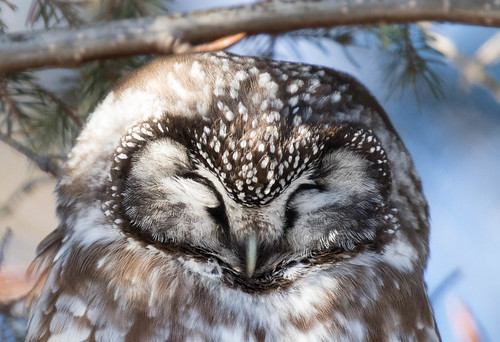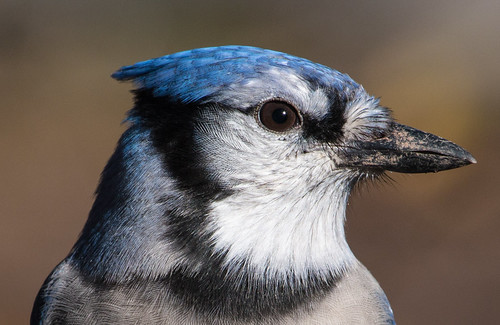If there is a month during which we should not be seeing owls all over the place, it’s National Blue Jay Awareness Month. Blue Jays do not approve of owls in any way, shape, or form, with good reason. Owls as small as Eastern Screech-Owls eat Blue Jays, so when a Blue Jay discovers any owl, it voices its disapproval loud enough to alert jays and other critters, far and wide.
Since the start of National Blue Jay Awareness Month, I’ve seen only a single Blue Jay on two occasions—one visiting my feeder briefly on January 3, and then that one or another on January 22. I’m glad they’ve been few and far between this year, because we’ve been seeing lot of owls. I’ve seen Snowy Owls a few times in Canal Park, and one magnificent adult male along the Western Waterfront Trail—three crows, close Blue Jay relatives, were chasing that one.
Northern Hawk Owls and Great Gray Owls are being seen at the Sax-Zim Bog and here and there up the shore a ways. They are easiest to find on cloudy days, but birding is like a box of chocolates—even on a sunny day you never know what you’re going to get.
The most sought-after owl in northern Minnesota, and also the one most likely to eat Blue Jays, is the Boreal Owl. A few have been seen in and near Duluth this winter. One hung around Hartley Nature Center on and off for a couple of weeks. I was lucky enough to see that one late one cloudy afternoon when she was actively hunting,
and earlier one sunny afternoon when she was roosting.
A Boreal Owl may appear almost anywhere—they’re most often seen roosting along the North Shore but you never know when one is going to turn up in someone’s backyard. They’re most often noticed by tracking down swearing chickadees or Blue Jays. It’s important not to disturb them when they’re roosting: if chickadees notice their open eyes, they start piping out tiny obscenities that alert larger, more dangerous birds to attack. So the owls are safest when allowed to sit tight with their eyes barely open.
Last week I went to Hartley with a small group in hopes of spotting the Boreal Owl. That day it was supposed to be near the bird feeders by the building, and there was a sign on the gate entrance to that area asking people to keep their distance if they saw it. We stepped in and walked pretty close to one feeder—that’s when I got my best photos of Black-capped Chickadees and Red-breasted Nuthatches for the day.
We scanned the trees all around, and then started back to the gate. That’s when Erik Bruhnke spotted the Boreal Owl—not only had it been in view all along, if only we’d looked on the right branch, but it was sitting directly above where we’d walked in! Of course, we weren’t the only ones who had missed it—the chickadees and nuthatches were zipping right past it, some just inches away, without missing a beat.
To leave the feeding area, we had to get closer to the owl than I like, but there was no other way out. We took photos with each step as we worked our way out. Too many birders can’t help but make squeaking sounds or get even closer in hopes of eyes-open photos, but making them open their eyes for our entertainment is the height of rudeness.
Barred and Great Horned Owls are presumably around in normal numbers, but I haven’t lucked into seeing either one yet. There could be a Northern Saw-whet Owl somewhere, too, but I’ll wait to start searching seriously for them in April when they’ll be calling. Meanwhile, even during National Blue Jay Awareness Month, there are plenty of other owls out there. And despite them, maybe even a Blue Jay or two.
